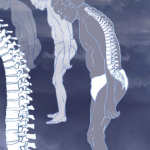 ACR BEYOND LIVE—Much, if not all, of rheumatology relies on clinical interpretation of historical, laboratory and imaging information to formulate a coherent diagnosis and treatment plan—even when such information is incomplete or has multiple possible interpretations. One of the best examples of this situation pertains to nonradiographic axial spondyloarthritis (nr-axSpA), a condition that is just now being recognized and described in a uniform manner.
ACR BEYOND LIVE—Much, if not all, of rheumatology relies on clinical interpretation of historical, laboratory and imaging information to formulate a coherent diagnosis and treatment plan—even when such information is incomplete or has multiple possible interpretations. One of the best examples of this situation pertains to nonradiographic axial spondyloarthritis (nr-axSpA), a condition that is just now being recognized and described in a uniform manner.
At the 2020 ACR State-of-the-Art Clinical Symposium, John Reveille, MD, professor and vice chair of medicine, University of Texas Health Science Center at Houston, discussed nr-axSpA in detail.
Progression of Criteria
In 2009, the Assessment of SpondyloArthritis International Society (ASAS) published classification criteria for nr-axSpA in which a patient who was younger than age 45 and had at least three months of chronic back pain could qualify for the diagnosis.
In one arm, patients who have HLA-B27 meet classification criteria if they also demonstrate two or more features of spondyloarthritis (i.e., inflammatory back pain, arthritis, heel enthesitis, uveitis, dactylitis, psoriasis, inflammatory bowel disease, good response to non-steroidal anti-inflammatory drugs [NSAIDs], family history of spondyloarthritis or elevated C-reactive protein [CRP]). In the other arm, patients with at least one clinical feature of spondyloarthritis plus inflammatory findings on magnetic resonance imaging (MRI) that are strongly suggestive of sacroiliitis—but lacking sacroiliac joint changes on radiographs that are not bilateral grade 2 or unilateral grade 3 or higher—would also meet criteria for nr-axSpA.1,2
It’s important to note these criteria have been met with criticism. For example, the term nonradiographic axial spondyloarthritis can be unclear in that it includes patients with early radiographic sacroiliitis (e.g., grade 1 sacroiliitis bilaterally or grade 2 sacroiliitis unilaterally, as seen on radiography), and the ASAS criteria are unclear regarding whether radiographic changes can include the spine or only the sacroiliac joints.3
Nevertheless, Dr. Reveille made clear in his talk that the prevalence and burden of disease with respect to nr-axSpA should not be underestimated. In evaluating the 2009–10 National Health and Nutrition Examination Survey (NHANES), Weisman et al. noted the age-adjusted U.S. prevalence of inflammatory back pain by Calin criteria was 5.0%.4
Deodhar et al. explained that in most cohorts and also in the NHANES study, the ratio of patients with nr-axSpA to those with ankylosing spondylitis (i.e., patients meeting radiographic imaging criteria) is 1:1.3 Yet in a study published last year describing diagnostic delay in identifying axial spondyloarthritis, the mean delay was 5.7 years, and factors associated with delayed diagnosis included female sex, those who are young at symptom onset, HLA-B27-negative status and the presence of psoriasis.5


